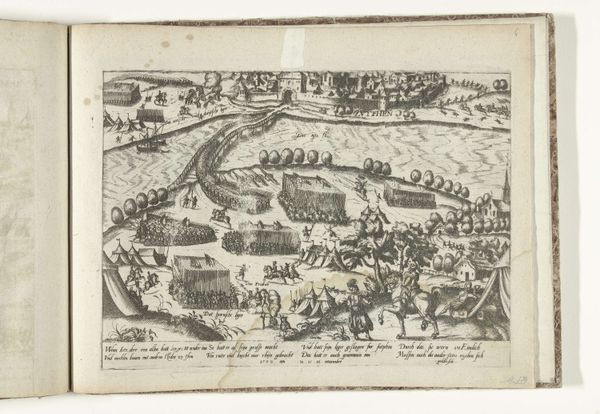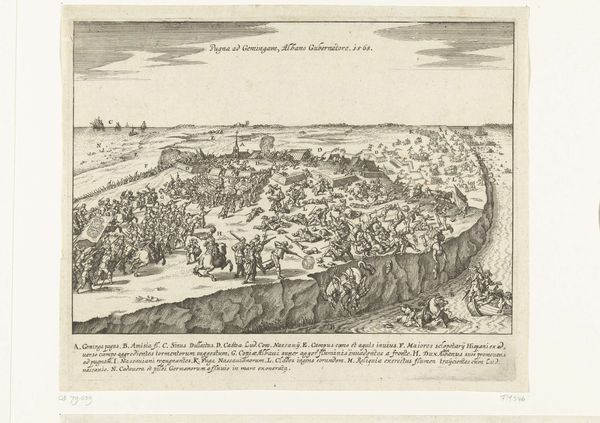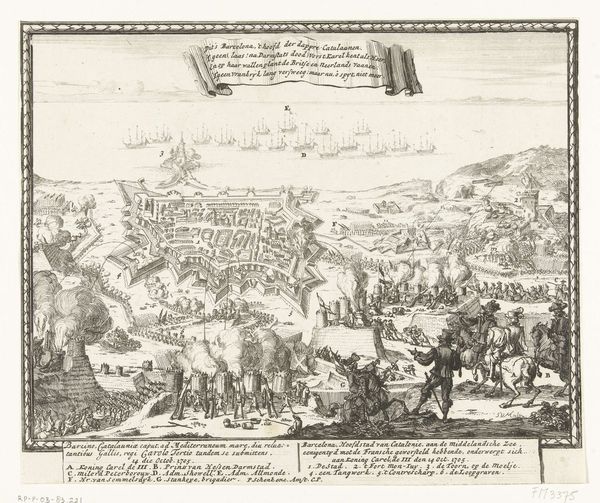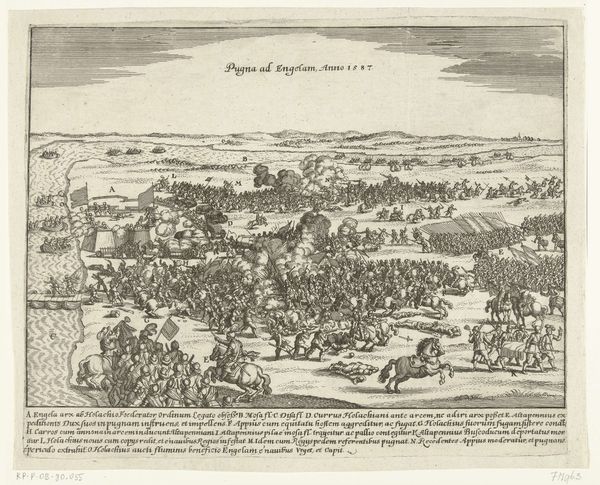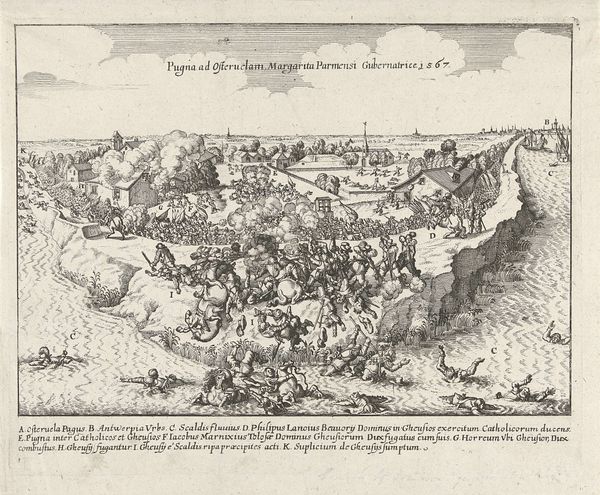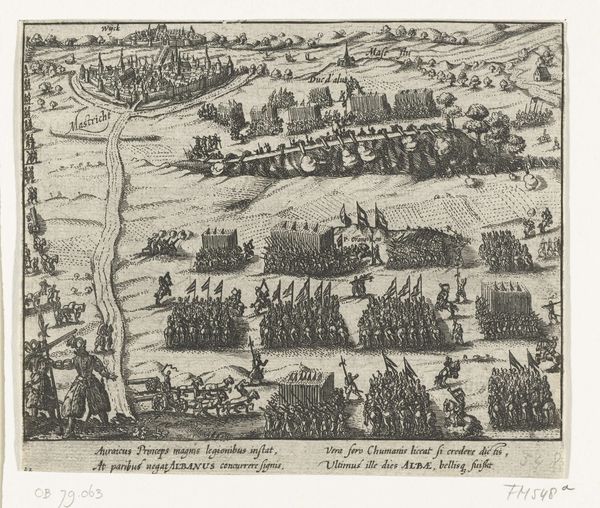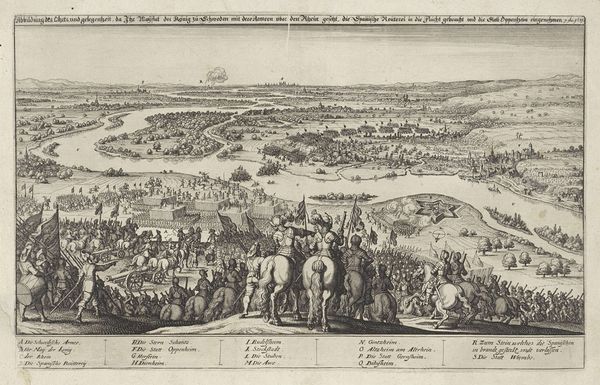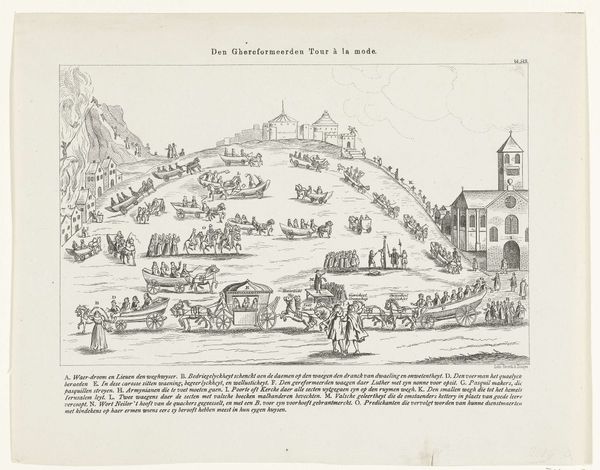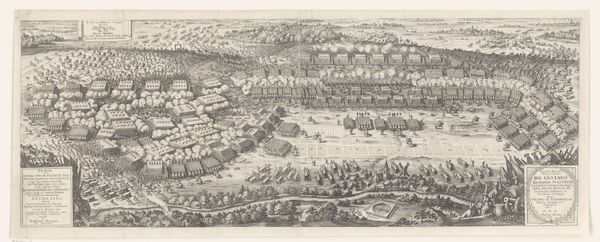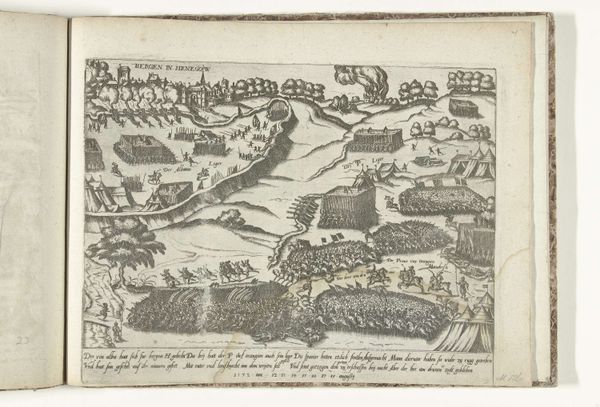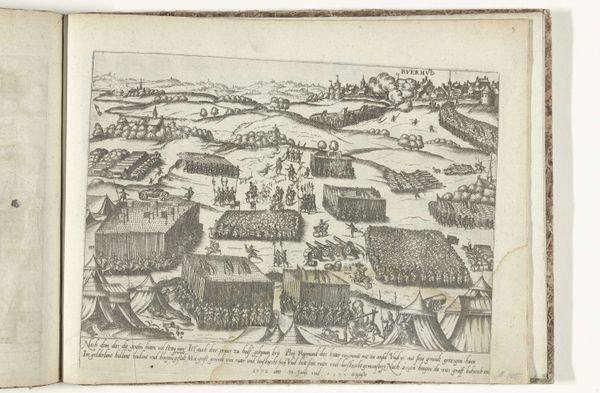
De Spanjaarden uit de Bommelerwaard verdreven door het doorsteken van de dijken, 1585 1651 - 1699
0:00
0:00
anonymous
Rijksmuseum
Dimensions: height 270 mm, width 373 mm
Copyright: Rijks Museum: Open Domain
Editor: We're looking at "The Expulsion of the Spaniards from the Bommelerwaard by Piercing the Dikes, 1585," an anonymous print from between 1651 and 1699. It's incredibly detailed; you can see tiny figures clashing in boats. It feels quite chaotic, actually. What historical context shaped this piece and how might we interpret its depiction of conflict? Curator: This print depicts a pivotal moment in Dutch history: the struggle for independence from Spanish rule. Water, a symbol of both vulnerability and strength in the Netherlands, is weaponized here. How does it make you feel to see a landscape actively turned into a tool of resistance, a strategic disruption of colonial power? Editor: It's a bit unsettling, frankly. There’s something aggressive about weaponizing the environment. Were these types of actions common during the Dutch Revolt? Curator: Indeed. The deliberate flooding of the landscape, while devastating, was a calculated act of resistance. It forced the Spanish to retreat, but it also reshaped the lives and livelihoods of the Dutch people. Do you think this print glorifies that action or attempts to portray its complexity? Consider the socio-economic implications alongside the military strategy. Editor: I guess I see it more as a portrayal of a desperate measure. Knowing the consequences, the destruction of land, I'm not sure I can view it as celebratory. It humanizes both sides to an extent, portraying war's disruptive nature beyond simplistic binaries of good and evil. Curator: Precisely. This print challenges a simple heroic narrative. It encourages us to consider the sacrifices and difficult choices made during the Dutch Revolt, reminding us that resistance can be fraught with moral ambiguities. Editor: Thinking about it that way, it’s much more layered than I initially perceived. It shows that historical events, even victories, often come at a great cost. Curator: Exactly. Reflecting on such images should promote understanding of conflicts, human rights and international relations with a global and multicultural awareness, going beyond mere aesthetic appreciation.
Comments
No comments
Be the first to comment and join the conversation on the ultimate creative platform.
